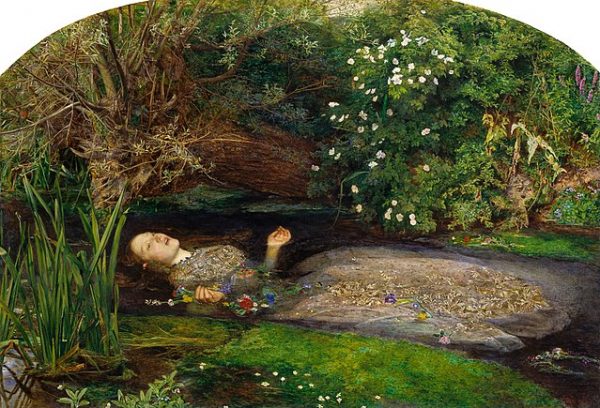Floriography and the symbolic meaning of flowers
Floriography and the symbolic meaning of flowers
Floriography and the symbolic meaning of flowers
-
Hannah
-
Hannah

Take, for example, the Ancient Egyptians. Though Egypt is a land of deserts, in ancient times the annual flooding of the Nile made the land beside the river wonderfully fertile, and so crops and plants grew there, as did flowers. Common flowers included celosia, cornflowers, daisies, jasmine, narcissus, poppies, roses and water lilies.
The Egyptians loved their flowers. Just as we do today, they developed gardens in which they could enjoy the beautiful sights and scents of flowers. Pharaohs had paradisiacal gardens at their palaces, and priests became keen botanists in order to harness the power of flowers and plants for spiritual ceremonies and medicine.
Flowers were objects of beauty, and so they were worn as adornments and were the inspiration for jewellery. They could also be a key element in perfume, which not only made one smell lovely but also, it was believed, improved health (Nefertum, the god of perfume, was also a healing god).
The most significant flower of Ancient Egypt was the lotus flower or water lily. The Nelumbo nucifera is a flowering plant that grows in flood plains and delta areas – where the water does not flow too quickly – and it floats ethereally on the surface.

Papyrus art depicting women with lotus flowers
The petals of the lotus flower close each night and reopen with the light the following day; therefore, the flower was seen by Ancient Egyptians to symbolise the journey from death to rebirth in the afterlife, and the eternal cycle of the sun god, Ra, through the sky. The flower had great meaning in religious ceremonies, and was considered to be magical: the Book of the Dead contains a spell using the lotus for resurrection.
Many other cultures ascribed meaning to flowers as well, and over time a ‘floriography’ (language of flowers) developed. Shakespeare, for example, drew upon floriography for his tragic character Ophelia in Hamlet, when she hands out flowers in the royal court that communicate meanings she cannot say in words.

Ophelia by Sir John Everett Millais
So what are the meanings of different flowers? How can we choose the best flowers for an arrangement or bouquet as a gift for others or our own home? Here’s an overview of the symbolism of common flowers today:
Aster – love, charm
Baby’s breath – happiness
Bluebells – kindness
Calla lily – affection, admiration
Carnation (pink) – remembrance
Carnation (red) – admiration of the heart
Carnation (white) – chasteness
Chrysanthemum (white) – reciprocated love
Chrysanthemum (white) – truth
Cosmos – order, harmony
Crocus – youthful gladness
Daffodil – respect, love
Daisy – gentleness, innocence and loyalty
Forget-me-not – remembrance
Freesia – friendship, innocence, purity
Gardenia – secret attraction
Heather – admiration
Hyacinth (purple) – forgiveness
Iris – faith, friendship
Ivy – fidelity, love, friendship and affection
Jasmine – happiness, cheerfulness
Laurel – success in love
Lavender – devotion
Lily (red) – passion
Lily (orange) – pride
Lily (white) – modesty, purity
Lily (yellow) – gratitude
Mistletoe – affection or love
Orchid – love, beauty
Pansy – remembrance
Poppy – remembrance for soldiers
Rose (coral) – desire
Rose (pale pink) – friendship
Rose (pink) – happiness
Rose (red) – love, desire
Rose (white) – charming, heavenly
Rose (yellow) – friendship, happiness
Sunflower – adoration
Tulip – perfect love
Violet – loyalty, devotion, faithfulness
Photo credits: 1) mystockdesigns/Shutterstock.com; 2) leoks/Shutterstock.com; 3) Wikipedia.